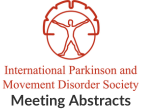Dissociative effects of thyrotropin releasing hormone on classical cerebellar ataxic signs and cerebellar adaptation in patients with spinocerebellar degeneration
Objective: To reveal effects of TRH [Thyrotropin releasing hormone (protirelin tartrate)] on the prism adaptation task in patients with spinocerebellar degeneration (SCD). Background: The cerebellum…Treatment with docosahexaenoic acid in Spinocerebellar Ataxia 38
Objective: To evaluate the safety and efficacy of docosahexaenoic acid supplementation in patients with spinocerebellar ataxia 38 (SCA 38), on clinical symptoms and changes of…Targeting the intracellular localization of Ataxin-3 as novel treatment strategy for Spinocerebellar Ataxia Type 3
Objective: Spinocerebellar ataxia type 3 (SCA3) or Machado-Joseph disease (MJD) is an autosomal-dominantly inherited neurodegenerative disorder caused by a CAG expansion in the ATXN3 gene…Is the cerebellum a good target for neuromodulation in movement disorders?
Objective: To assess the effects of dentate nucleus transcranial magnetic stimulation and deep brain stimulation on patients with cerebellar ataxia of different etiologies. Background: Cerebellar…Effectiveness of Deep Brain Stimulation (DBS) in Mice with Spinocerebellar Ataxia (SCA1).
Objective: To evaluate the effectiveness of Deep Brain Stimulation (DBS) in a mouse model of Spinocerebellar Ataxia type 1 (SCA1). Background: Spinocerebellar ataxia type 1…Evaluating the effects of deep brain stimulation (DBS) in mice with spinocerebellar ataxia (SCA1)
Objective: To determine the therapeutic effects of Deep Brain Stimulation (DBS) in mice with Spinocerebellar Ataxia (SCA1). Background: Ataxia is a movement disorder affecting balance…European pediatric normative values for the scale for assessment and rating of ataxia (SARA)
Objective: To obtain international age-related normative values for the SARA in healthy European children. Background: The Scale for Assessment and Rating of Ataxia (SARA) is…The nucleocytoplasmic transport of ataxin-3 as pathogenic mechanism in spinocerebellar ataxia type 3
Objective: Spinocerebellar ataxia type 3 (SCA3) or Machado-Joseph disease (MJD) is a neurodegenerative disorder caused by a CAG expansion in the MJD1 gene leading to…Clinical benefits of vestibular rehabilitation in neurodegenerative diseases
Objective: To assess the benefits of vestibular rehabilitation using virtual reality technology through pre and post application of the Dizziness Handicap Inventory (DHI) and the…Deep brain stimulation of the dentate nucleus improves ataxia and modulates cortical excitability
Objective: To assess tremor and ataxia changes by dentate nucleus deep brain stimulation and evaluate how DBS could modulate cortical excitability seen in cerebellar stroke.…
- « Previous Page
- 1
- …
- 4
- 5
- 6
- 7
- Next Page »
